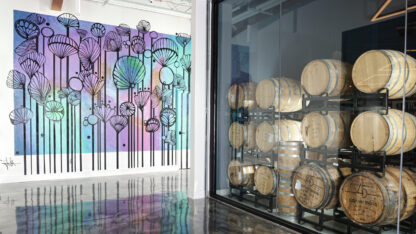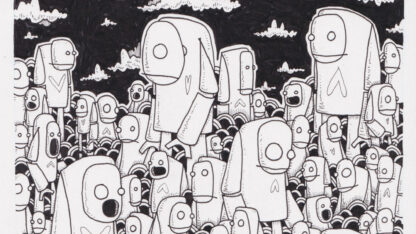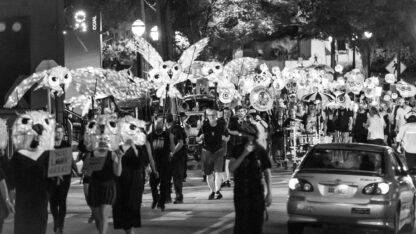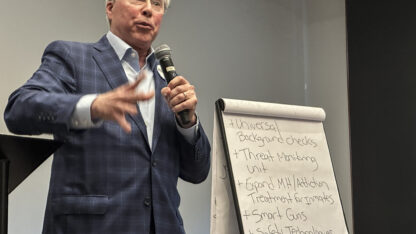An examination of the cultural and historic phenomenon of graffiti artwork in Emory exhibit
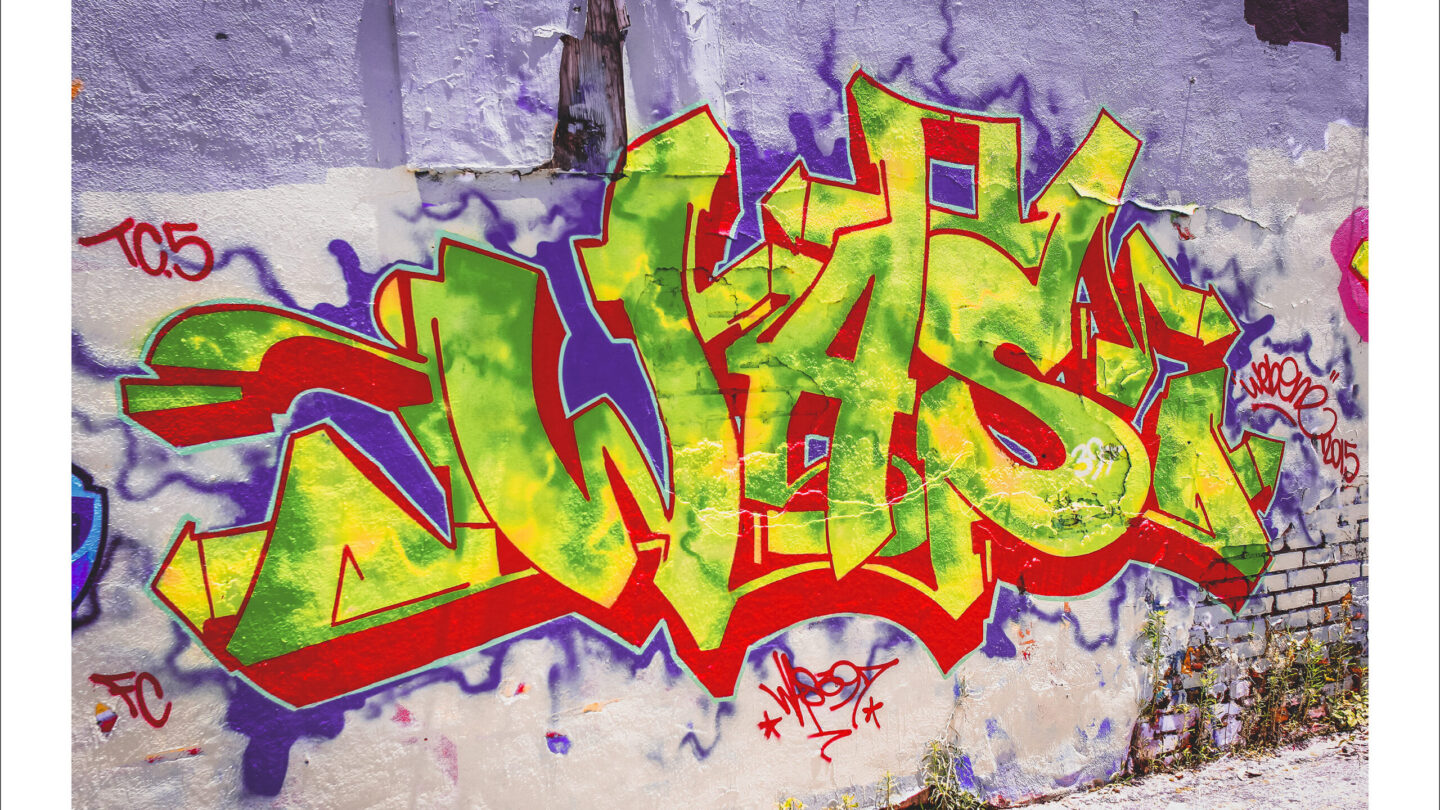
The graffiti art scene in Atlanta is tremendous, though it comes with controversy under Georgia law. Graffiti is a form of vandalism created without consent, so what defines graffiti art versus vandalism? A new exhibition at Emory University’s Rose Library investigates the medium’s culture, aesthetic and historical phenomenon. “Graffiti: A Library Guide to Aerosol Art” is on view through Jan. 2023.
Randy Gue is the assistant director of collection development and curator of political, cultural and social movements collections at Emory University. He joined “City Lights” host Lois Reitzes via Zoom for a conversation about this controversial field of art.
Interview highlights:
The important difference between “graffiti” and “street art:”
“There are two separate things there – graffiti and street art. People in the communities view those as two separate things. One being graffiti, which the community calls ‘writing,’ is focused on letters, typography, and street art privileges images over words, and so there’s a difference there. But when folks in the country really became aware of what was called ‘subway art’ at the time, it was in the late 1960s and early 1970s, born in New York City, part of one of the four pillars of hip-hop,” explained Gue.
A misunderstood form of communication:
“It’s a giant conversation that goes on all over the country. I was walking close to some rail lines recently, and a gentleman was walking his dog, and he said, ‘Why are you taking pictures of that? It’s just vandalism,’ and I was able to point out to him that it’s a form of communication,” recounted Gue. “When you’re talking about freight trains, that’s a form of communication that runs all over this country, and ever since NAFTA in 1993, runs into Mexico and up into Canada. So it’s a way for people who feel like they don’t have a voice, and for communities who are invisible, too, as the graffiti writer named Apache in Chicago told me, to scream, ‘I am still here.'”
How the exhibition reveals broad academic interest in graffiti:
“Every university has acquired several significant notable photograph collections about graffiti. One is the Jack Stewart papers, and the other is the digital photographs of H.J. Parsons. And everyone I mentioned the collections to had the same reaction; they were very excited about the graffiti materials, but they were also surprised that Emory and the Rose Library would be interested in a subject like that,” said Gue. “Of course, Emory was interested in what the French stencil artist Blek le Rat called ‘the biggest art movement in the world.'”
He continued, “You know, it’s the only art movement in the Western world created by children. All these folks were under 18. And so it got me thinking that people have expectations about what academic libraries have and don’t have… I did a little research, and it turns out we have over 200 books here at the library about graffiti, graffiti, writers, and street art. We have movies; we have zines in our collection about graffiti. So my purpose was twofold – one, to show that graffiti is an important historical cultural and aesthetic phenomenon, but then also to kind of broaden people’s ideas of what libraries collect and what they’re interested in.”
“Graffiti: A Library Guide to Aerosol Art” is on view at Emory University’s Rose Library through Jan. 2023. More information is available at https://libraries.emory.edu/events-exhibits/exhibits/graffiti-library-guide-aerosol-art-woodruff-library-level-3.
